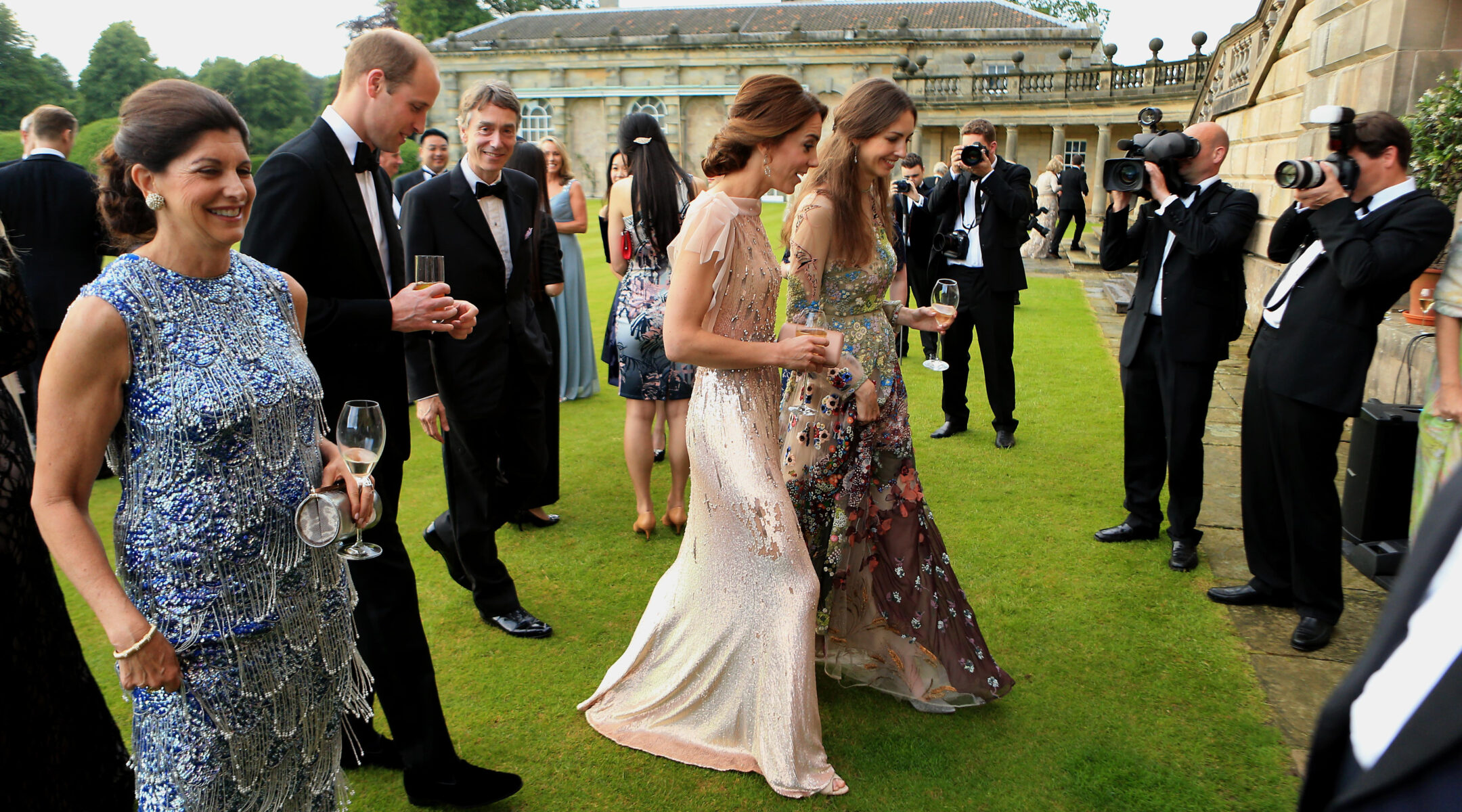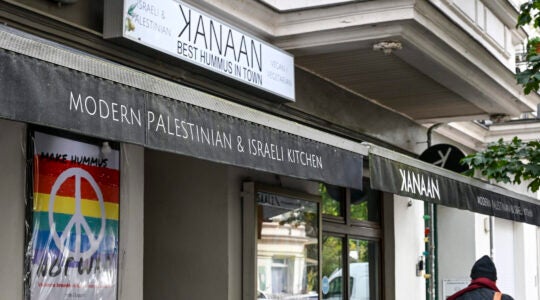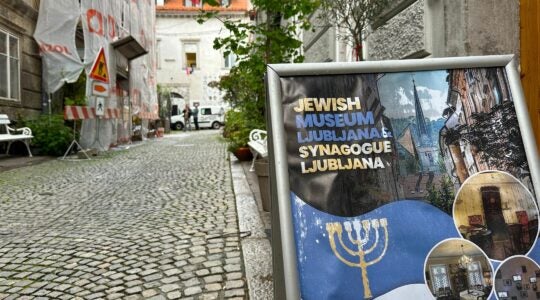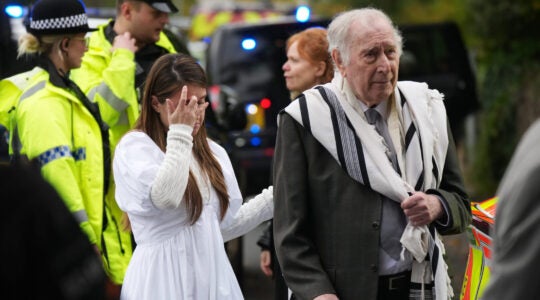UPDATE: On Friday, a day after this story’s publication, Kate Middleton released a video disclosing that she had been diagnosed with cancer.
(JTA) — Internet sleuths scouring photographs to understand the befuddling tumult in Britain’s royal family believe they have solved a different mystery: what happened to artifacts taken from China during the Qing Dynasty.
Their conclusion, in turn, is drawing renewed attention to the imperial spoils of one of the wealthiest and most influential Jewish families in history.
To understand the story, one must start at the beginning: the announcement in January that Kate Middleton, who is married to the British heir apparent, William, would be undergoing surgery and thus exit public view.
It has now been nearly three months since anyone has seen convincing proof of life for Middleton, also known as Catherine, Princess of Wales Kensington Palace’s efforts to assure royal-watchers of her health and safety have included a series of baffling gaffes, including, last week, the release of a doctored photograph that news agencies retracted in a rare move and for which Middleton, or at least a digital simulacrum of her, has apologized.
A wide range of theories are now being promulgated about Middleton’s disappearance, which comes while King Charles III has stepped out of public life after a cancer diagnosis. The theories range from the prosaic to the frightening to the utterly fanciful, but several popular ones are connected to the belief that Prince William is having an affair with Rose Hanbury, the Marchioness of Cholmondeley and Middleton’s onetime friend. (Through an attorney, Rose has denied the allegations.)
This is where Jewish history comes in. Hanbury’s husband David, the Marquess of Cholmondeley, is the grandson of Sybil Sassoon — a member of the influential Baghdadi Jewish family and also a member of the Rothschilds, the prominent Jewish banking family.
Born in London in 1894 to a father who was born in Bombay (now Mumbai) and a French mother from the Rothschild family, Sassoon was part of a generation of very affluent Jews who transitioned from achieving remarkable success in British society despite antisemitism to integrating completely into its most rarefied echelons. Sassoon married George Cholmondeley, Earl of Rocksavage, when she was 19, bore him three children and, when she died in 1989, was buried in a church on the grounds of their estate, Houghton Hall.
Rose and David live in Houghton Hall today, surrounded in part by the design choices made by his grandmother. Sassoon, an avid art collector, was known for restoring the Cholmondeley estate to its former glory. David, too, made headlines more recently by revamping the estate’s public gardens. And this week, with Rose squarely in the internet’s sights, the interior of the estate returned to public view when royals-watchers discovered photographs from 2013 and 2016 featuring the couple and their lushly decorated home.
The decor, Chinese internet users quickly realized, includes furniture and art from the Qing Dynasty, China’s last imperial dynasty, which reigned from 1644 to 1912.
The Sassoon family’s ties to China were long and complicated. After Britain forced the flow of opium into China in the 19th century, during what are known as the Opium Wars, the Sassoon family became the dominant trader sending the narcotic from India to China. Victor Sassoon, who lived from 1881 to 1961, shifted much of the family’s wealth to Shanghai, where he was both crucial to the city’s modern development and to its role as a haven for Jews during the Holocaust.
A recent flurry of attention to the family, sometimes referred to as “the Rothschilds of the East,” included uneven scrutiny of the family’s role in the international opium trade. A museum exhibit in New York City, for example, focused almost entirely on the art and artifacts, including ornate Judaica, that the family collected and gave little mention to the opium trade.
Many of the items collected by the family have made their way subsequently to museums, including the British Museum. But Chinese internet sleuths speculated that the items on display at Houghton Hall also came from their country.
Whether the items were purchased legally or were, as some have alleged, “pillaged” is impossible to know. The Sassoons’ wealth meant they likely commissioned works from Chinese artisans in addition to acquiring antiques. Still, the Sassoons were active in China during what is known as the “Century of Humiliation,” when foreign powers controlled China and wide swaths of art were stolen.
Moreover, changing norms in the art world have placed a wide array of works acquired amid imperial relationships in the past under scrutiny. The British Museum, for example, has faced intense pressure — including, recently, from the Chinese government — to return items obtained through colonization and coercion. While it has resisted complying, the museum has begun identifying objects as having undergone “different, complex and sometimes controversial journeys” from British colonies to its London galleries.
The Chinese internet discussion about the Cholmondeleys’ home decor, which has spread on social media in recent days, is starkly emotional.
“For Chinese netizens, this is a great hurt,” said a TikTok user named Cathy Chen who was among the first to draw attention outside of Chinese social media to the raging debate about the images.
“These cultural relics not only represent the history and culture of our nation but are also the wisdom and hard work of our ancestors,” Chen continued. “They are being used as trophies to show off.”
But even she did not depart fully from the issue that triggered the investigation in the first place. “Lastly,” Chen said, “is Kate Middleton safe right now?”
JTA has documented Jewish history in real-time for over a century. Keep our journalism strong by joining us in supporting independent, award-winning reporting.






